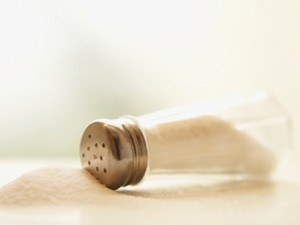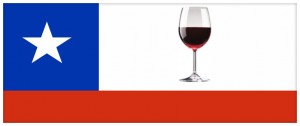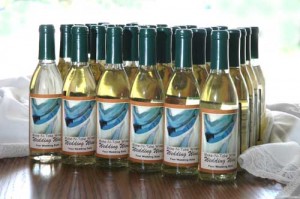by Lorri | May 23, 2012 | UnCorked
The Art of Wine is one of my favorite wine events in Arkansas, and this year marks the 12th anniversary of the annual celebration. This Northwest Arkansas event, June 7-9, will draw guests from across the country, with proceeds supporting the Walton Arts Centers award-winning arts and education programs.
Attendees will have the opportunity to indulge in hundreds of wines. My favorite event is the Winemakers Dinner on June 7, not just because of the extraordinary ambience of dining on the Baum Walker Hall stage but the detail put into planning the evenings food and wine pairings. This years evening is with California winemaker Debbie Juergenson, the genius behind Red Rock Winery’s products. Dine with the winemaker and savor a five-course dinner prepared by executive chef Bill Lyle of Ellas Restaurant in Fayetteville.
New this year is an afternoon Sparkling Wine Extravaganza. I cant think of a better way to start an evening than sipping and celebrating Champagne while learning a few new wine tidbits. Aleks Berry of The Fayetteville Wine Cellar will discuss everything from the basics of how all those bubbles get into the glass to exciting new styles awaiting your palate.
The Premier Tasting on June 9 is the main event, featuring 150 reserve-quality wines and food prepared by area chefs. The tasting is a rare opportunity for wine lovers to experience a colossal variety and range of styles in one setting.
For more information or tickets, contact the Walton Arts Center box office at (479) 443-5600 or by visiting waltonartscenter.org.
This weeks recommendations offer a preview to warm up your palate.
THE VALUES
- 2010 Presquile Sauvignon Blanc, California (about $21 retail)
- 2011 Honig Vineyard Sauvignon Blanc, California (about $17 retail)
- 2009 Lock and Key North Coast Meritage, California (about $18 retail)
- 2010 Edna Valley Vineyard Cabernet Sauvignon, California (about $26 retail)
THE SPLURGES
- 2009 Bell Napa Cabernet Sauvignon, California (about $52 retail)
- 2009 Michael David Vineyards Gluttony Amador Old Vine Zin, California (about $65 retail)
by Lorri | May 16, 2012 | UnCorked
The 2004 film Sideways may have brought Santa Barbara wine country to the mainstream consciousness, but the terroir continues to drum up demand from around the world.
If you’ve ever been in a vineyard in the Santa Rita Hills on a summer afternoon, when the distinct, chilling, crisp wind blows in from the Pacific Ocean, you understand the key to Santa Barbaras terroir.
This region, a designated American Viticultural Area, is distinguished by its east west orientation from the coast, with valleys opening directly to the ocean. This unique landscape allows an ebb and flow of fog and ocean breezes that shape the distinct microclimates responsible for the idyllic cultivation of world-class wines.
Moving inland, temperatures rise for a growing season that most people would consider warm. These conditions make the region ideal for cabernet sauvignon and merlot.
The diverse climate means the region produces a variety of wines, especially those that thrive on long, slow, cool growing seasons like pinot noir, syrah and chardonnay.
THE VALUES
- 2011 Firestone Riesling, California (about $13 retail)
- 2011 SeaGlass Santa Barbara County Chardonnay, California (about $12 retail)
- 2011 Hayman and Hill Santa Barbara Pinot Noir, California (about $14 retail)
THE SPLURGES
- 2009 Fess Parker Santa Barbara Syrah, California (about $22 retail)
- 2009 Tantara Bien Nacido Old Vine Pinot Noir, California (about $56 retail)
- 2010 Cambria Katherines Vineyard Chardonnay, California (about $25 retail)
- 2009 Foxen Julias Vineyard P i not Noir, California (about $57 retail)
by Lorri | May 9, 2012 | UnCorked
 Unfortunately, when it comes to matching wine and food, there are a few foods that belong on the less glamorous list of misfits – foods notorious for awkward encounters with wine.
Unfortunately, when it comes to matching wine and food, there are a few foods that belong on the less glamorous list of misfits – foods notorious for awkward encounters with wine.
It isn’t that these foods don’t play well with others. Its more that they’re looking for a very specific set of characteristics in a mate.
Foods containing a lot of salt have a tendency to accentuate the taste of alcohol in wine. The salt can be from table salt or other ingredients such as soy sauce or anchovies. Because of their high acidity Champagne and sparkling wines can take on the saltiness in most foods. No need to look further to validate this rule than the classic pairing of Champagne and caviar.
THE VALUE
- NV Sumarroca Brut Cava, Spain (about $17 retail)
THE SPLURGE
- NV Pierre Peters Blanc de Blanc Champagne, France (about $56 retail)
Spicy foods tend to overpower the wine, often leading to people opting for beer. Beer is a popular match for these dueling dishes because it works to put the fire out on some of the hot spice. But wines such as Gewurztraminer and off-dry Rieslings offer cooling fresh acidity that doesn’t wither in the heat.
THE VALUE
- 2011 Wente Vineyards Riverbank Riesling, California (about $13 retail)
THE SPLURGE
- 2011 Snoqualmie Naked Riesling, Washington (about $15 retail)
Salads get a bad rap when it comes to wine pairing. Most likely the blame lies not with the salad but with the vinegar-based dressing. The traditional rule for fine dining was to not serve a salad with wine if the dressing contained vinegar or citrus. But if the salad is dressed with a simple drizzle of olive oil or a light vinaigrette, pairings are possible. To be safe, steer clear of heavy vinaigrettes.
THE VALUE
- 2011 Cellar No. 8 Chardonnay, California (about $12 retail)
THE SPLURGE
- 2011 Frey Vineyards Chardonnay, California (about $18 retail)
Ice cream and sorbet present special challenges, as almost any food that numbs your mouth will impair the taste of wine. On this pairing it is generally recommended that you will create a better match by pouring the wine on top of the ice cream. Because this is such a tricky pairing, Im offering only one suggestion.
THE SPLURGE
- 2010 Osborne Pedro Ximenez Sherry, Spain (about $25 retail)
by Lorri | May 2, 2012 | UnCorked
 Bottle-by-bottle and sipby-sip, Chile is reinventing its image to get the U.S. wine drinker to take notice.
Bottle-by-bottle and sipby-sip, Chile is reinventing its image to get the U.S. wine drinker to take notice.
It has been in the past 30 years or so that Americans have become familiar with the South American country’s wines. (Until the 1970s, Chile had strong export restrictions.) And one of the first things American consumers noticed was the exceptional value of Chilean wine.
In addition to making wine that’s a great value, Chile has come a long way with its unique blend of old-world philosophy and new-world innovation. Key to the purity and diversity of its grapes, Chile is considered a viticulture paradise with ample sunshine, a dry climate and one of the few wine regions free of phylloxera (a tiny insect that attacks the roots of grapevines, depleting nutrients and slowly starving the vine).
Chile has adopted some of the most dramatic technology changes in the wine world. Until the latter part of the 20th century, most Chilean winemakers focused on local demand — simple oxidized whites and faded reds. But in the late 1980s, growers and producers made a commitment to secure a successful export market. They invested in their vineyards, overhauling and replacing outdated and tired equipment, adding oak barrels, stainless-steel vats and practicing modern winemaking techniques.
With Chile’s transformation came wines at their best, packed with youthful, vibrant fruit. Cabernet Sauvignon, merlot, carmenere and the emerging syrah grapes are the most widely planted reds. Chardonnay and sauvignon blanc remain the country’s best examples of whites.
THE VALUES
- 2011 Conde de Velazquez Cabernet Sauvignon, Chile (about $10 retail)
- 2011 Concha y Toro Xplorador Chardonnay, Chile (about $10 retail)
- 2010 Concho y Toro Casillero del Diablo Cabernet Sauvignon, Chile (about $12 retail)
- 2010 La Playa Block Selection Merlot, Chile (about $11 retail)
THE SPLURGES
- 2010 Terra Andina Altos Malbec, Chile (about $20 retail)
- 2010 Baron Philippe Rothschild Los Vascos Reserve, Chile (about $24 retail)
- 2010 Veremonte Primus Red Wine, Chile (about $25 retail)
by Lorri | Apr 25, 2012 | UnCorked
 A recent Uncorked column on chardonnay had many readers sending feedback on the continued love of this grape (making me realize I may not be writing about this superstar enough). Along with various emails praising a column devoted solely to chardonnay came a flurry of requests for more values and fewer splurges. Many readers also wanted more 1.5-liter and box options for large parties and cost savings.
A recent Uncorked column on chardonnay had many readers sending feedback on the continued love of this grape (making me realize I may not be writing about this superstar enough). Along with various emails praising a column devoted solely to chardonnay came a flurry of requests for more values and fewer splurges. Many readers also wanted more 1.5-liter and box options for large parties and cost savings.
I put my palate to the test and searched our market for the best chardonnays that fit into a price range under $15 for standard bottles, boxed for $25 or less and 1.5-liters for less than $20.
VALUES UNDER $15
- 2011 Hess Collection Chardonnay, California (about $13 retail)
- 2011 Santa Rita 120 Chardonnay, Chile (about $10 retail)
- 2011 Gnarly Head Chardonnay, California (about $11 retail)
- 2011 Toad Hollow Chardonnay, California (about $15 retail)
- 2011 Root 1 Chardonnay, Chile (about $12 retail)
- 2011 Little Penguin Chardonnay, Australia (about $8 retail)
- 2011 Concannon Chardonnay, California (about $10 retail)
BOXED OPTIONS
- 2011 Pepperwood Grove, California (about $20 retail)
- 2011 Bota Box Chardonnay, California (about $19 retail)
- 2011 Black Box Chardonnay, California (about $25 retail)
- 2011 FishEye Chardonnay, California (about $16 retail)
1.5-LITER BOTTLE
- 2011 Lorval Chardonnay, France (about $12 retail)
- 2011 Lindeman’s Bin 65 Chardonnay, Australia (about $14 retail)
- 2011 Beringer Vineyards Chardonnay, California (about $18 retail)
- 2011 Columbia Crest Two Vines Chardonnay, California (about $18 retail)
by Lorri | Apr 18, 2012 | UnCorked
 Brides are finalizing their spring and summer wedding plans — some with extreme relief and others with overwhelming stress. With a wealth of wedding planning advice, most have confidently confirmed the dress, flowers and cake, but the celebratory drink sometimes is a last-minute thought.
Brides are finalizing their spring and summer wedding plans — some with extreme relief and others with overwhelming stress. With a wealth of wedding planning advice, most have confidently confirmed the dress, flowers and cake, but the celebratory drink sometimes is a last-minute thought.
The most important first step in choosing the ideal wine is your budget. Knowing how much you want to spend for your wine and beverages is the starting point for your caterer, retailer or consultant.
Exactly how much wine to buy depends on the time of day, number of guests and overall format of your reception. A daytime toast with wedding cake will require considerably less wine than an evening of dinner and dancing. For evening receptions, most wedding planners figure on each guest drinking two glasses of wine every two hours. If you’re without a consultant to tally how much wine to order there are many websites with wedding wine calculators. RealSimple. com offers an easy calculation based on the number of guests, type of beverage and time of day for the big event.
With your style in mind, make your plans based on how many people you will be serving at the reception. If you plan for 300 guests, an expensive vintage wine most likely will not be necessary. However, if your wedding will be intimate, in a home or small setting, you may want to give more attention to detail and stay with my past advice: Buy the best wine you can afford.
Choosing the style of wine for a reception can be straightforward if you are only serving cake and sweets. A glass of Champagne or sparkling wine lends a celebratory touch and an easy resolution. If your menu is more complex, select food-friendly wines such as chardonnay, pinot grigio, merlot, pinot noir and cabernet sauvignon. And if you still want the bubbly toast, choose a sparkling wine from California or Australia, where many finds are under $10 a bottle.
THE VALUES
- NV Seaview Brut, Australia (about $10 retail)
- 2011 Chateau Bonnet Bordeaux Blanc, France (about $14 retail)
- 2011 Santa Rita 120 Merlot, Chile (about $11 retail)
THE SPLURGES
- 2007 Argyle Brut Sparkling, California (about $34 retail)
- 2010 Cambria Katherine’s Vineyard Chardonnay, California (about $28 retail)
- 2009 Clos Pegase Napa Valley Merlot, California (about $31 retail)
 Unfortunately, when it comes to matching wine and food, there are a few foods that belong on the less glamorous list of misfits – foods notorious for awkward encounters with wine.
Unfortunately, when it comes to matching wine and food, there are a few foods that belong on the less glamorous list of misfits – foods notorious for awkward encounters with wine.
 A recent Uncorked column on chardonnay had many readers sending feedback on the continued love of this grape (making me realize I may not be writing about this superstar enough). Along with various emails praising a column devoted solely to chardonnay came a flurry of requests for more values and fewer splurges. Many readers also wanted more 1.5-liter and box options for large parties and cost savings.
A recent Uncorked column on chardonnay had many readers sending feedback on the continued love of this grape (making me realize I may not be writing about this superstar enough). Along with various emails praising a column devoted solely to chardonnay came a flurry of requests for more values and fewer splurges. Many readers also wanted more 1.5-liter and box options for large parties and cost savings. Brides are finalizing their spring and summer wedding plans — some with extreme relief and others with overwhelming stress. With a wealth of wedding planning advice, most have confidently confirmed the dress, flowers and cake, but the celebratory drink sometimes is a last-minute thought.
Brides are finalizing their spring and summer wedding plans — some with extreme relief and others with overwhelming stress. With a wealth of wedding planning advice, most have confidently confirmed the dress, flowers and cake, but the celebratory drink sometimes is a last-minute thought.